-
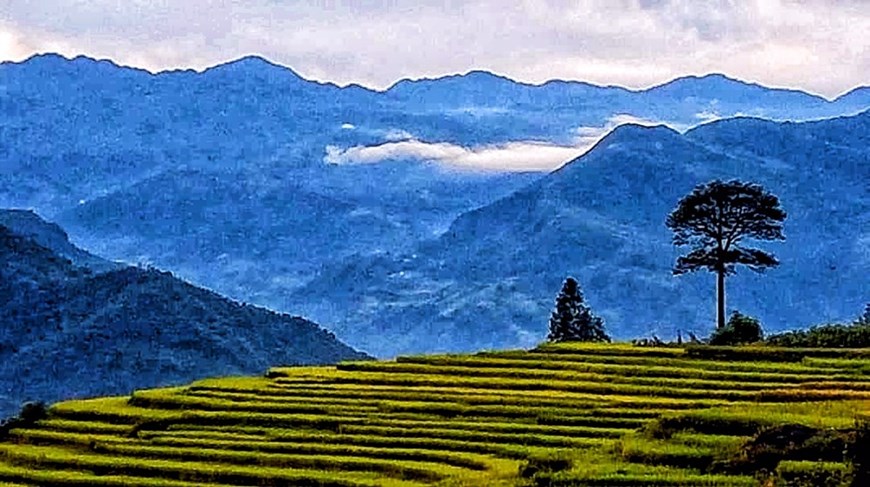
Arriving in Y Ty commune, about 70 kilometres to the north of the renowned resort township of Sa Pa in early September, tourists will have a chance to enjoy terraced golden ripening paddy fields. Located in the heart of the spectacular Nhui Co San mountain range, Y Ty commune is situated at an altitude of over 2,000 metres above sea level in Bat Xat district, Lao Cai province. The place is praised as the best terraced paddy fields not only in Vietnam but also in the world. Y Ty is rather isolated due to high surrounding mountains. It is home to H’mong, Dao, Giay and Ha Nhi ethnic minority groups. (Photo: VietnamPlus)
-
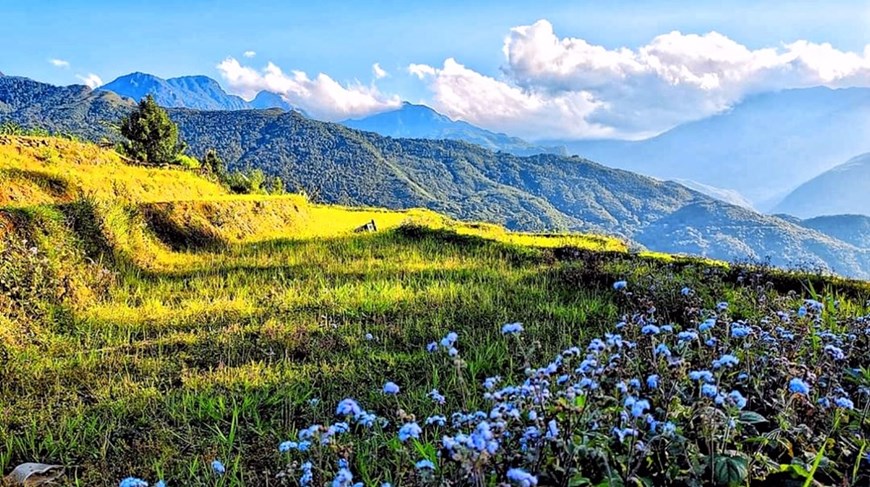
Y Ty is an ideal place for adventure lovers who are interested in untouched nature. It is a must-see destination for photographers and nature lovers who do not want to be in the crowds of Sapa. The commune has a total of nearly 800 households in 16 villages with four ethnic groups: Mong, Ha Nhi, Dao and Kinh, whose poverty rate is still very high. Y Ty is also the only place where many Ha Nhi people live, with a unique cultural identity. Arriving in Y Ty, visitors will be surprised at the magical scenery of nature, and soon wonder how such the heavenly bewitching terraced paddy fields are set amidst the lush forest and picturesque valleys. (Photo: VietnamPlus)
-
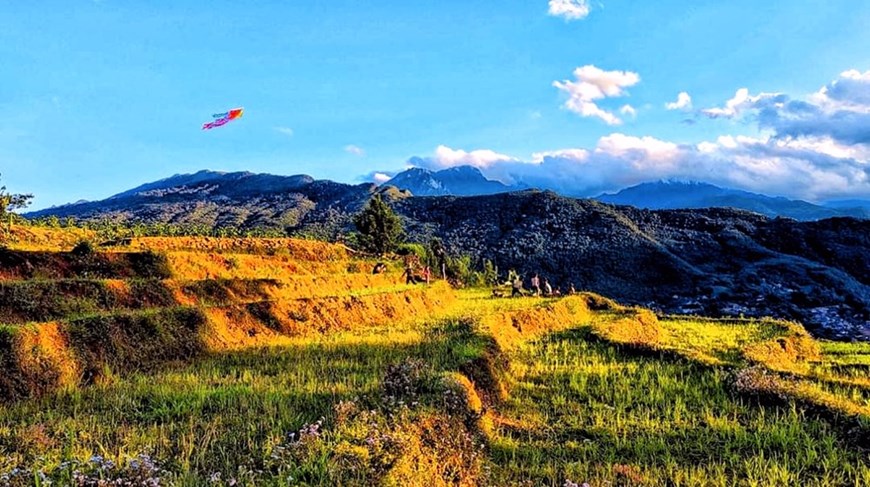
Ripening paddy fields in Ngai Thau, Thien Sinh and Choan Then areas of Y Ty are popular for photographers. Though Ban Xat district has the terraced paddy fields almost everywhere, the best scenes are blessed to Y Ty, making it the attractive gem for nature lovers, photographers, and explorers from all over the world. It is common that visitors see many photographers taking the professional pictures for their projects around this scenic village. The outstanding terraced rice fields of Y Ty might go beyond visitors’ expectations, weakening their talent of photography outdoors, as any scene among the mountainous and green settings is excellent for shooting. (Photo: VietnamPlus)
-
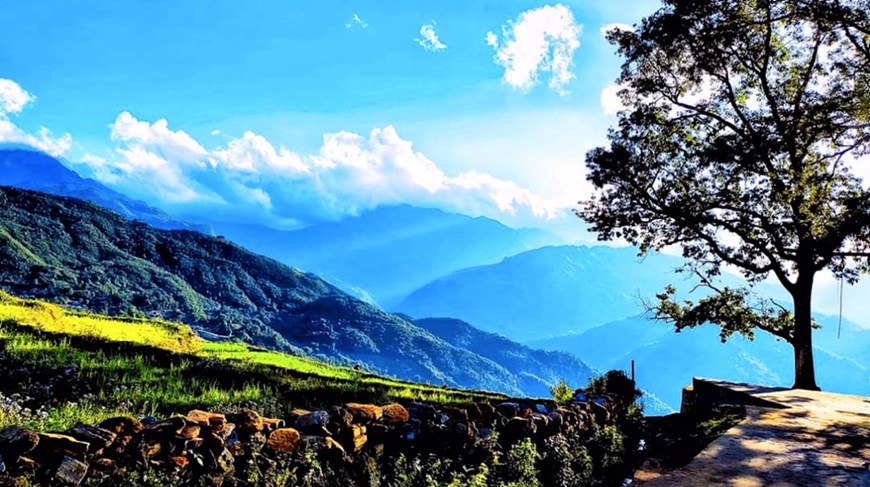
Local residents in Y Ty are mostly from Mong, Dao, Giay and Ha Nhi ethnic minority groups. The life in the mountainous areas has never been easy. The ethnic groups who live in this region have been relying on agriculture for centuries and the techniques they have used, and the terrain that provide the fields are much the same as they have always been. The only way to grow crops in the mountains is to create terraces that retain the water and prevent soil erosion. Terraces were devised in agriculture to ensure more effective farming on sloped plains. By cutting a series of receding flats into the mountain, the risk of devastation by surface runoff and erosion is reduced. (Photo: VietnamPlus)
-
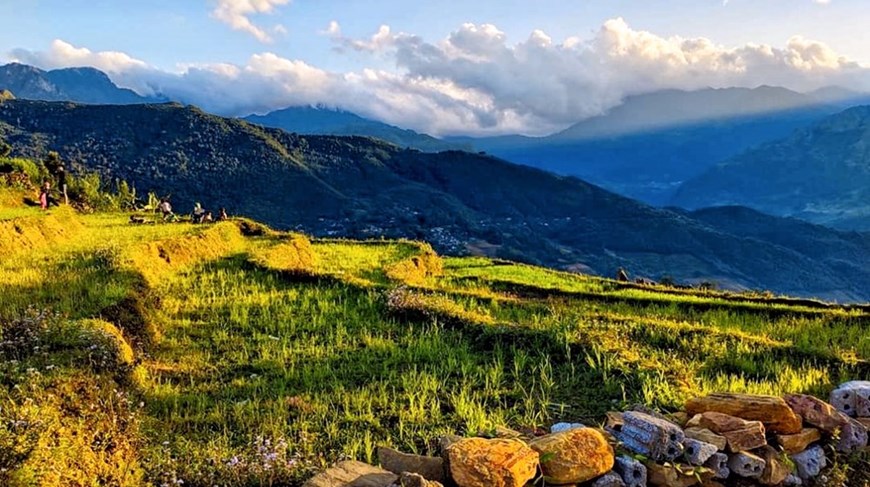
The highest mountain, Nhi Cu San stands at 2,700 metres and is often covered in clouds. However, there is plenty of colour which varies with the season. While the paddy grows on the terraces, green in the predominant colour but as harvest time approaches between September and October, the rice terraces appear golden. The whole region of Y Ty is at 1,500 metres and more so it does take time to reach it, yet the journey itself is spectacular, and the rewards on arrival are well worth the effort. The villagers do little on the terraces during the winter; there is a single crop each year and after the harvest they need only to be ploughed before the planting season arrives. (Photo: VietnamPlus)
-

Choan Then is an ancient village dating back over 300 years in Y Ty commune of Bat Xat district in the northern mountainous province of Lao Cai. Being home to 57 households of the Ha Nhi ethnic minority group, it is not only renowned for “nha trinh tuong” (rammed earth house) but also impresses any visitor with special cultural identity. Ha Nhi is one of the 54 ethnic groups in Vietnam and, according to the 2009 population census, has a population of about 22,000. Most of this minority group’s population live in Lao Cai, Lai Chau and Dien Bien, three mountainous border provinces in the north of the country. (Photo: VietnamPlus)
-
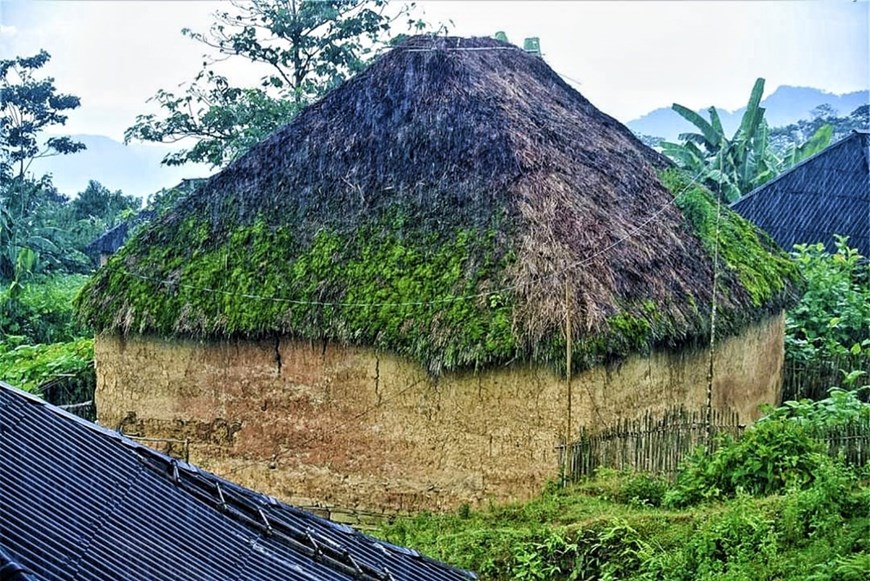
Choan Then still has its pristine beauty preserved nowadays. “Nha trinh tuong” (rammed earth house) is a typical and unique architecture of the Ha Nhi people. “Trinh tuong’ houses feature earth walls about 4 – 5 metres high. The building of these houses start at the end of the crop season, from the eighth to the twelfth lunar month, and requires a lot of time, even 4 – 5 months, as well as efforts to complete. Only this type of house can be tolerant of the harsh climate conditions, cold and foggy, in this northern mountainous land. Some ‘trinh tuong’ houses have even been standing for a few hundred years, and now, they have become a magnet for visitors from far and wide. (Photo: VietnamPlus)
-
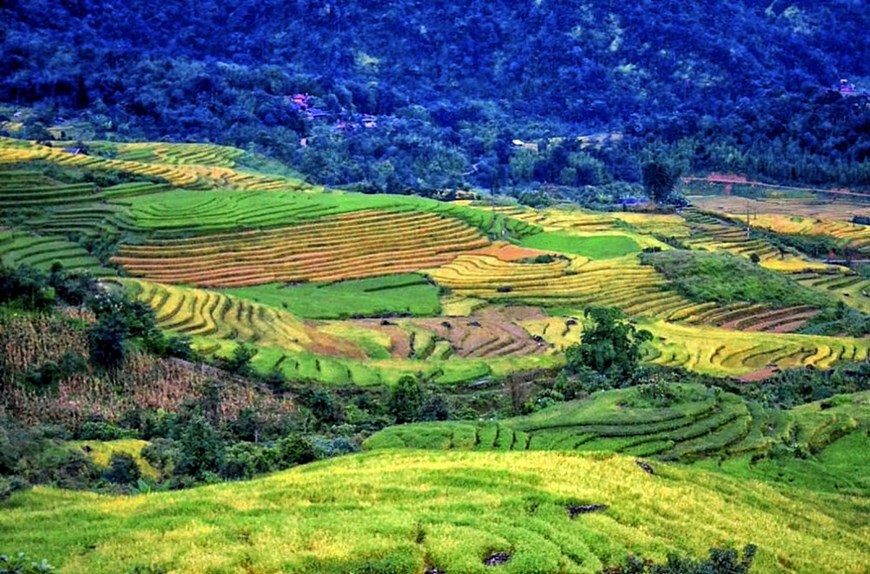
Arriving in Y Ty at any time of the year, visitors can enjoy the fresh air and peace to help them escape the crowded city life. In early April, tourists will also be welcomed by blooming rhododendron trees, covering the region with a pink-violet shade. In May and June when summer rains begin, water flows to the fields, softening dry soil to allow local residents to begin planting rice. The brown soil, sparkling water, sun rays and green rice seedlings all create a wondrous picture for tourists. To have the best view of Y Ty’s cloud-covered region, it is recommended to travel between September and the following April during the dry season, with a possibility of snowing. (Photo: VietnamPlus)
-
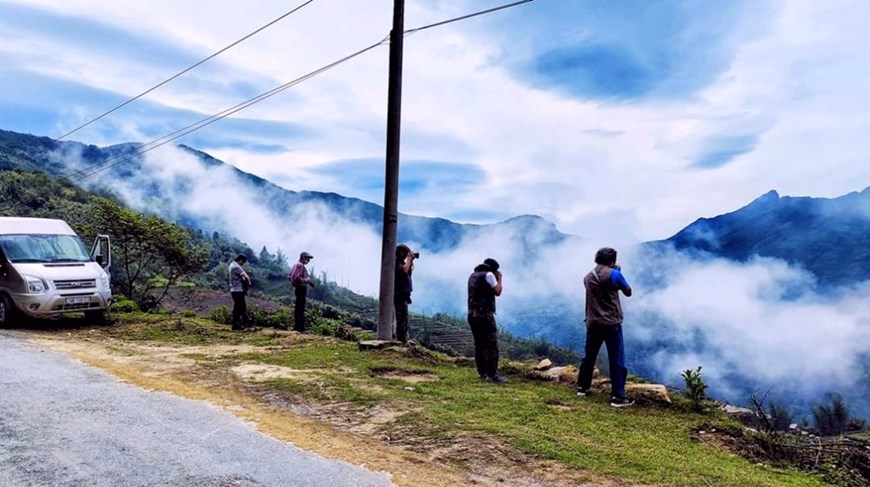
Hunting the cloud in Ngai Thau of Y Ty in the rice harvesting season is a must-do activity when visiting the area. Being famous for the beauty of both nature and people, Y Ty is a praiseworthy and untouched destination for photography, culture exploration, and nature-friendly vacation. Together with shooting the stunning terraced rice fields, take time recording the daily activities of the ethnic groups of the northern Vietnam. Passing hundreds of years, the paddy fields reflect the perfect efforts of both humankind and nature. In September and October, Y Ty commune is the most beautiful as the paddies turn yellow dotted with houses with wooden roofs. (Photo: VietnamPlus)
-
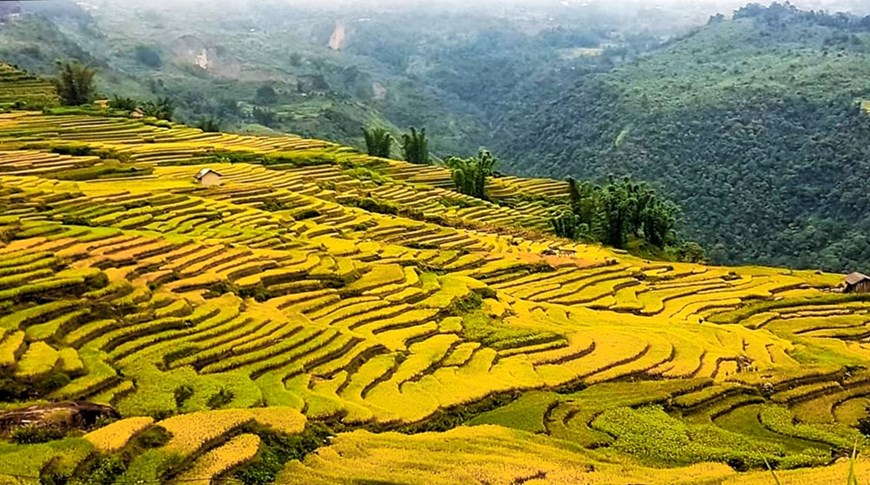
Y Ty commune is well-known among Vietnamese trekkers for its beautiful scenery covered with cloud. It was once selected as one of the Best-kept Secrets in Asia Travel by the travel site www.thrillist.com. To have the best view of Y Ty’s cloud-covered region, it is recommended to travel from September to the following April during the dry season, with a possibility of snowing. The terraces are planted once they have filled with water and for a while, the water shimmers in the sun, until the small shoots come through. It is a lovely time to see and photograph the terraces even though there will be rain around. (Photo: VietnamPlus)
-

Once seeing Y Ty terraced paddy fields in Vietnam directly or just through pictures, any one will agree that that this destination is best for nature photography. There, visitors can find the heaven with the yellow carpets, especially in September and October, to enrich their photo albums. Also, the shooting chances are abundant from the high spot in which they can meet with the hill tribes. Y Ty photo shooting might sound new to some individuals who are on the quest for Vietnam beauty reflected via the terraced paddy fields. Passing hundreds of years, the rice fields reflect the perfect efforts of both humankind and nature. (Photo: VietnamPlus)
-
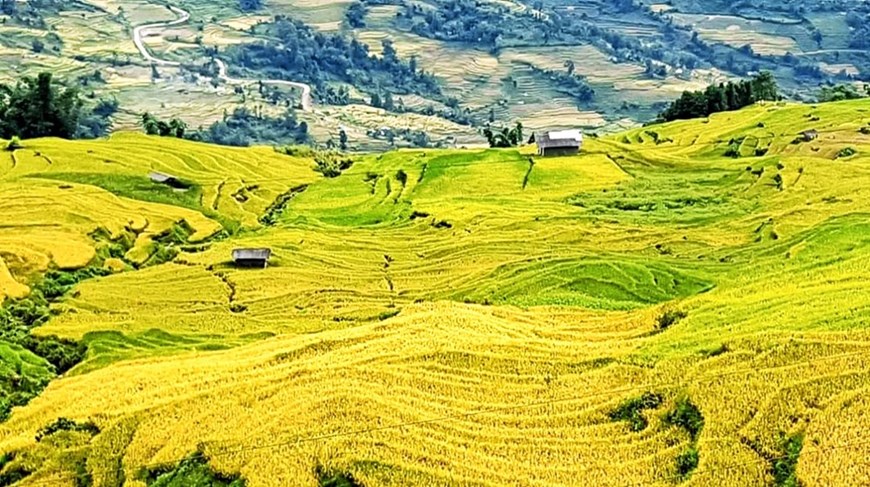
The magnificent terraced paddy fields of ethnic minority tribes, with yellow ripened paddy grains and seemingly endless stretches of flowers, have transfixed viewers for generations. Environmental and social responsibility website Mother Nature Network has announced a list of the 30 most beautiful places in the world including the terraced paddy fields of Y Ty. “While the terraces pictured here are located in Lao Cai province of Vietnam, equally mesmerizing scenes can be found throughout Southeast Asia where people have been doing the seemingly impossible for millennia: growing rice – which requires a flat surface and a lot of water – in mountainous areas,” the website said. With all of these identities, Y Ty is worthy of a visit for any tourist. (Photo: VietnamPlus)
Marvelous “golden season” on terraced ripening paddy fields of Y Ty
September is the most beautiful season of Y Ty, a border commune in Bat Xat district of the northwestern mountainous province of Lao Cai, right on the foot of Fansipan Mountain. The stunning beauty of terraced ripening paddy fields is a unique tourism product of the locality.


